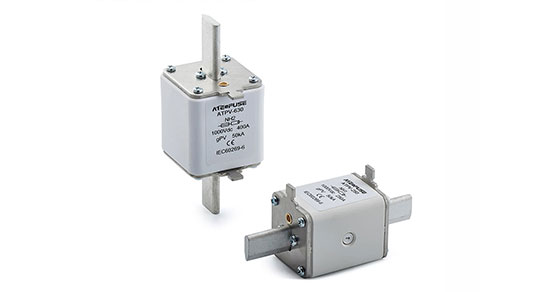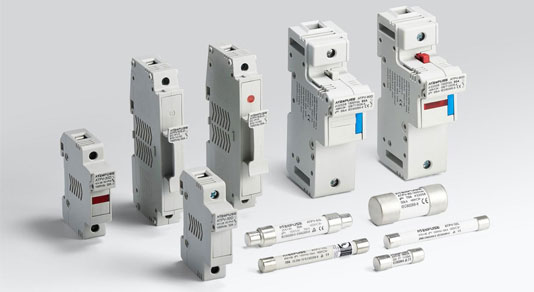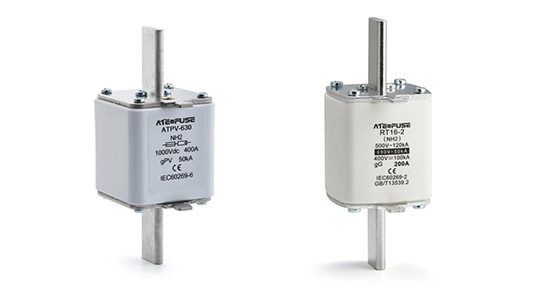Are AC and DC Fuses the Same?
When it comes to safeguarding electrical circuits, fuses play a pivotal role. However, a common question arises: are AC (Alternating Current) and DC (Direct Current) fuses the same? The short answer is no. Despite some surface - level similarities in appearance, AC and DC fuses have distinct differences in their design, operation principles, and application scenarios. This article delves into these aspects to clarify why they can't be used interchangeably.
1. Basic Understanding of AC and DC Circuits
Before exploring fuse differences, it's essential to recap how AC and DC circuits function.
• AC Circuits: In an AC circuit, the current continuously changes its direction. Typically, in household and industrial settings, the frequency is 50 or 60 Hz. The voltage in an AC circuit fluctuates sinusoidally, moving between positive and negative peaks. This constant variation impacts how fuses react to overcurrent situations.
• DC Circuits: DC circuits have current flowing in a single, unchanging direction. Sources like batteries and some electronic devices supply DC power. The voltage in a DC circuit remains relatively stable, such as the 12V in a car battery, which poses unique challenges for fuse operation.
2. The Fundamental Working Principle of Fuses
At a basic level, fuses work by having a thin metal conductor (the fuse element) that melts when excessive current passes through it. This melting breaks the circuit and prevents damage to the connected equipment. However, the way this process unfolds differs significantly in AC and DC circuits due to the nature of the current.

3. Key Differences Between AC and DC Fuses
Arc Quenching
When a fuse blows, an electrical arc may form as the circuit is interrupted. Managing this arc is crucial for safety and effective circuit protection.
• AC Fuses: In AC circuits, the current naturally reaches zero 100 or 120 times per second (for 50/60 Hz frequencies). This zero - crossing event helps in extinguishing the arc. AC fuses are designed to take advantage of this natural phenomenon. They often use arc - quenching chambers that cool and interrupt the arc rapidly once the current hits zero.
• DC Fuses: In DC circuits, there is no natural zero - crossing of the current. The arc can persist for a longer time since the voltage remains constant. As a result, DC fuses must incorporate specialized designs. These can include longer arc - quenching paths and magnetic arc suppression techniques to extinguish the arc before it causes damage to the fuse or other components in the circuit.
Voltage Rating
The voltage rating of a fuse indicates the maximum voltage it can safely interrupt.
• AC Fuses: AC fuses are rated for the root - mean - square (RMS) voltage of the AC circuit. But AC voltage has peak values. For example, a 220V RMS AC supply has a peak voltage of around 311V. AC fuses are engineered to handle these peak voltages during the arcing process.
• DC Fuses: DC fuses are rated for a constant DC voltage. Since there is no voltage oscillation in a DC circuit, DC fuses must be able to withstand the full voltage continuously. Using an AC fuse in a DC circuit or vice versa can lead to arc - related failures because the voltage rating may not be compatible with the circuit's requirements.
Current - Carrying and Melting Characteristics
The response of fuses to overcurrents also varies between AC and DC circuits.
• AC Fuses: Due to the alternating nature of the current, the fuse element in an AC circuit heats up and cools down in a cyclic manner. This allows for a certain tolerance to short - term current surges, such as those occurring during motor start - up. AC fuses are designed to account for these transient loads.
• DC Fuses: In DC circuits, the current flows steadily. So, the fuse element heats up continuously when there is an overcurrent. DC fuses need to melt quickly to interrupt the current before significant damage occurs, as there is no cyclic cooling like in AC circuits.
Physical Design and Construction
To cope with these operational differences, AC and DC fuses have distinct physical designs.
• AC Fuses: They often utilize simpler arc - quenching mechanisms, relying on the natural zero - crossing of the AC current. Their arc chambers may be smaller or less complex compared to those of DC fuses.
• DC Fuses: DC fuses feature larger or specially designed arc chambers. They may also use materials that can withstand prolonged arcing. Some DC fuses even include magnetic elements to help “blow out” the arc more effectively.
4. Consequences of Using the Wrong Fuse
Using an AC fuse in a DC circuit or a DC fuse in an AC circuit can lead to serious problems:
• Safety Risks: A mismatched fuse may not be able to extinguish an arc properly. This can result in overheating, and in extreme cases, fires or explosions.
• Equipment Damage: If the fuse fails to interrupt the current in a timely manner, it can damage sensitive electronic devices or wiring in the circuit.
• System Reliability Issues: Incorrect fuses may either trip too frequently (nuisance tripping) or fail to trip when an overcurrent occurs. This compromises the overall protection of the electrical system.
5. Selecting the Appropriate Fuse
When choosing a fuse, the following steps should be followed:
1.Determine the Circuit Type: First, identify whether the circuit is AC or DC.
2.Check Ratings: Ensure that the fuse's voltage and current ratings match the requirements of the circuit. This includes accounting for any transient surges that may occur.
3.Consider the Load: For example, DC circuits with motors or other high - inrush loads may require fuses with specialized response characteristics.
In conclusion, AC and DC fuses are not the same. Their designs, operating principles, and safety mechanisms are tailored to the unique demands of alternating and direct current circuits. Understanding these differences is vital for protecting electrical systems, preventing hazards, and ensuring the reliable operation of electrical equipment. Whether you are dealing with household wiring (AC) or a battery - powered system (DC), always select the fuse that is designed for that specific type of circuit.






